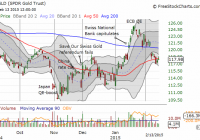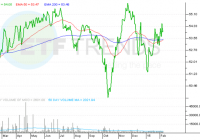3 Agricultural ETFs Rising On Wet Weather
After a rough patch over the last six months, thanks to a stronger dollar and accelerated crop plantation on a favorable weather outlook, agricultural ETFs seem to have turned the corner. Last week was great for the beaten down agro-based commodities, as worries over wet weather in America’s key growing belts led traders to bet on the contracts of several agricultural commodities. Almost all agro-based commodities added gains last week (as of June 26, 2015) and are likely to see more surges in the short term. Fears that led to this spike revolved around weather in the key grains growing states in the Midwest. Existing wet and cold weather and predictions for more rains are causing delay in the planting of this year’s crops by farmers. Some analysts have been pointing to El Nino for this wet weather condition in North America. In fact, Citigroup expects agro-based commodities to deliver as much as 25% gains this summer ( per Bloomberg ). Investors should note that El Niño, a warm-water phenomenon that blows up off the Pacific coast of South America, causes drought in some regions of the world and floods in others. Below we highlight a few agricultural exchange-traded products which have the potential to trounce the overall agro-based commodity space and offer investors some sweet returns from the wet weather despite the broad-based commodity market gloom on the dollar strength. Wheat Speculation of cold weather in the U.S. pushed the wheat prices to a 6-month high as such weather would curb production in the U.S. southern Great Plains . The area has already experienced massive rains that can even cause a flood. High levels of humidity go against crop quality, causing farmers to hold back the cropping. Due to this, wheat prices have also been soaring. Investors can easily play this trend via Teucrium Wheat ETF (NYSEARCA: WEAT ), a commodity product from the issuer Teucrium. This fund invests in wheat futures that are traded on the CBOT, but does it in a way that looks to lower contango issues. This $27.3 million wheat ETF was the top-performer last week, having returned over 12%. Corn Much like the wheat market, the price of corn is also rallying. Thunderstorms have already hurt budding corn crops in a few areas and now lower plantings will likely have an adverse effect on stock piles. Teucrium Corn ETF (NYSEARCA: CORN ) – a fund that provides investors direct exposure to the corn commodity – was up about 6% last week. The $82 million fund was otherwise down 21% in the last one-year period. Soybean Farmers are sowing soybeans at the most sluggish pace seen in 19 years, this time of the year . A delayed planting will result in a below-average yield, per the source. As a result, soybeans futures are seeing an uptrend. The $6.4 million Teucrium Soybean Fund (NYSEARCA: SOYB ), which looks to track the daily changes of a weighted average of the closing prices for three futures contracts for soybeans, was up 3.5% last week. Notably, the grain was at a five-year low level to start the month. Miscellaneous ETF Choices There are options for investors interested to play the above three commodities via a single product. To do this, investors should not tap the pure play choice; rather they should target a host of miscellaneous ETFs having exposure in the trio. MLCX Grains Index TR ETN (NYSEARCA: GRU ), DJ-UBS Grains Total Return Sub-Index ETN (NYSEARCA: JJG ) and DJ-UBS Agriculture Subindex Total Return ETN (NYSEARCA: JJA ) are some of the ETFs which are highly invested in the trio and accordingly shot up last week. GRU, JJG and JJA were up 12%, 9.6% and 7.3% respectively. Original Post

